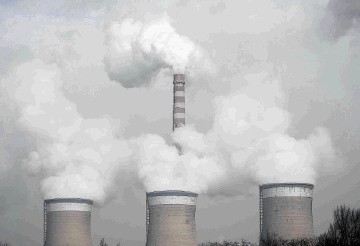
It’s the time of year when finding someone else to do the hard work makes sense. So in that festive spirit, I am delighted to defer to a recent speech made by Ian Taylor, president and chief executive of Vitol, the global trading company.
In addition to that role, Ian is the main investor in Harris Tweed Hebrides, which confirms him as a man of infinitely sound judgment. We first met over dinner with Fidel Castro, but that’s another story.
Anyway, Ian does not lavish around his public pronouncements. So when he made a speech recently entitled “Vitol CEO busts nine myths about the oil market”, I spotted a column in the making.
This was his own variation of Nine Lessons and Carols and was designed to show that, while traders sometimes get it wrong, they are not the only ones. It was a brilliantly simple summary of the way in which many previous assumptions about energy trends and markets are currently being stood on their heads.
Myth One was that, in an age where oil and gas are harder to find, it was bound to be the super-majors whose resources would deliver results.
Not so. Ian instanced BG’s 15 major discoveries in the last 15 years; Tullow’s successes in Ghana, Uganda and now Kenya; east African gas pioneered by Anadarko, Cove and Heritage; now Nobel’s giant gas discoveries off Israel and Cyprus. Not a major among them.
Then he moved on to Myth Two – Peak Oil. As a professional pedant, I am not fully with him here since, by definition, exploitation of a finite resource means it will always be in decline from peak.
But we know what he means – the apocalypse keeps getting postponed as new discoveries and technologies kick in. Or to quote Ian’s festive summary: “With major new advances in horizontal drilling, 3D seismic, shale fracking as well as the pioneering spirit of our industry, the Grinch has not yet stolen our Christmas”.
Myth Three involved US reliance on imports which “we were all taught when we learnt the first things in the oil industry” but is now reducing rapidly.
Indeed, Ian described this as “probably the most important and remarkable surprise of the past 20 years”. Who would have dreamed (as the IEA predicts) of the US overtaking Saudi Arabia and Russia as the world’s largest oil producer by 2020 – while cutting its own consumption?
The Fourth Lesson – sorry Myth – dealt with the role of gas. Instead of the eastern seaboard building rows of LNG terminals to handle imports, as previously anticipated, the shale revolution is turning the US into an exporter of the stuff. Ian predicted that by 2016, the US will be playing “a major part in global LNG markets” while LNG will become a traded market.
For Myth Five, he turned to the assumption that coal would decline as the world searched for cleaner fuels. For better or environmental worse, this is definitely not happening. In the major producer/users – US, China, India and Russia – coal continues to be the cheap option. Even displacement from the US market, in response to cheaper oil and gas, has only pushed it into exports – while British demand for coal has increased by 25% in the past year.
Ian’s Myth Six was “the assumption of rising energy demand”. Actually, this is only half a myth since China, India and the Middle East are still racing ahead.
But oil demand in the OECD has gone down in the past five years so there is a divergence between developing economies and mature ones. Recession is a factor but so too is the success of Government policies, notably in the US where the gas-guzzlers are finally giving way to fuel efficient cars and trucks.
At this point, I suspect that Ian was wishing there had been only Six Lessons and Carols. But only three to go.
Myth Seven had been that China “would become a large sink for product supply”. Instead they embarked on a huge programme of self-sufficiency.
Myth Eight was the anticipated rise of renewables to displace fossil fuels – in fact, renewables satisfy just 3% of global energy demand and that is expected to rise to 7% by 2025. “So some growth, but not a breakthrough”.
His final Myth involved the perception of all bankers as “useless and completely not fit for purpose”. Ian generously assured members of that profession in his audience that this was “complete nonsense”. Furthermore, “we are going to need a strong and robust banking sector over the next 20 years . . . we need to work together with the banks to encourage risk-taking and lending for the energy sector”.
It was an entertaining race through a lot of issues but the serious point is inescapable – and of major relevance to our own little corner of the globe.
Making economic predictions based on assumed energy trends has proved to be a totally unreliable occupation – which is maybe part of why Ian’s speech finished with a plea: “If you are a Scot, as I am, please make sure you vote to keep Scotland in the UK in 2014”.
Recommended for you
